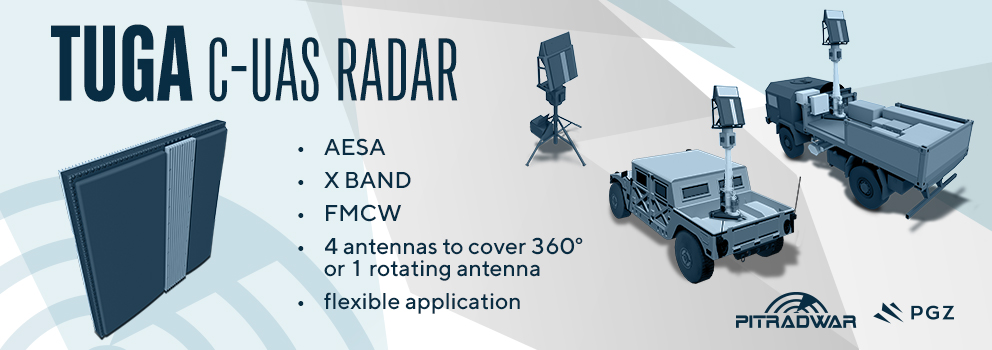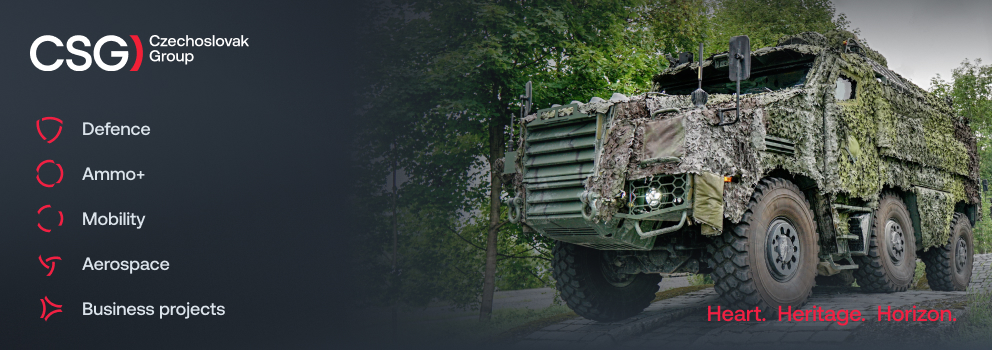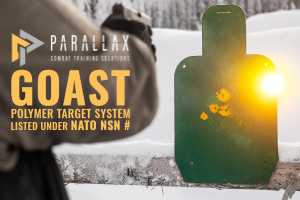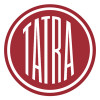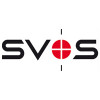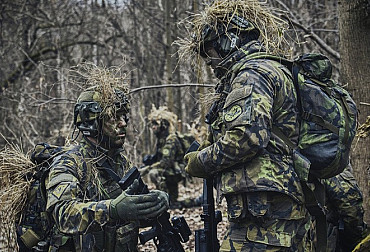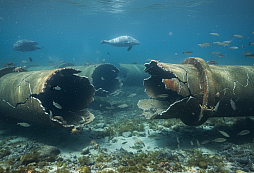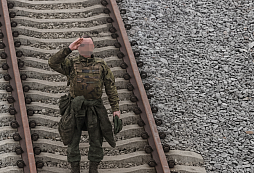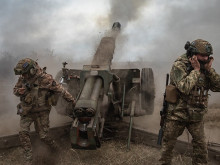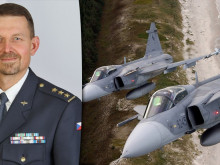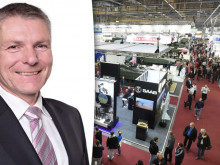Capt. Jan Heřmánek: In modern combat, soldiers must be able to evaluate battlefield situations in real time and respond with complex thinking
The Libavá Military Training Area recently hosted an active reserve exercise of the 72nd Mechanized Battalion called Summer Blade 2025, which was also attended by reservists from Finland and Denmark. The exercise followed on from February's Arctic Blade training in Finland and was conceived as a pilot project to test the possibilities for exchanging experiences and cooperation within a smaller international team. The co-organizer of Summer Blade 2025 was Captain Jan "Sully" Heřmánek, whom we interviewed.
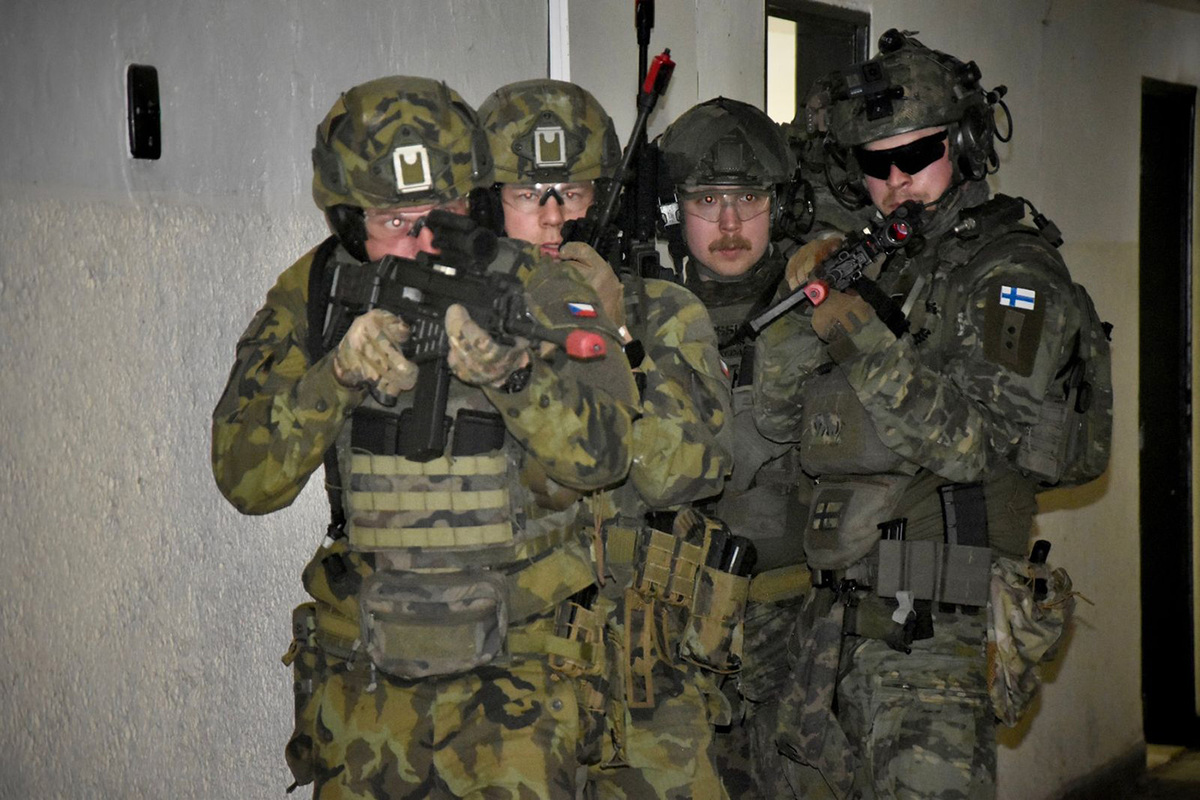
You are one of the co-organizers of the Summer Blade exercise. Could you describe how long the preparations took and how they proceeded?
In fact, the preparations took years, because this is a deepening of existing cooperation with the Finnish and Danish armies in the area of joint training of reserve units. We laid the foundations for this cooperation back in 2014, when members of our unit took part in international winter training in Finland for the first time. Since then, we have been regularly traveling together to Finland to train in Nordic conditions during the winter. A few years ago, we agreed to train Finnish reservists here, but this was first prevented by Covid and later by certain administrative obstacles in both armies, which we managed to overcome this year and, together with our battalion, carry out the first joint training in our conditions.
What do you think makes the Summer Blade exercise unique?
It is the first joint training exercise for foreign reserve units in our country. It is also the first exercise with units from the Nordic countries, with whom we have long-standing cooperation, namely the Finnish and Danish armies. It is also worth mentioning that this is not a competition or a course, but a joint training exercise focused on the contemporary combat needs of infantry on the battlefield. This includes combat in built-up areas, drones, and combat in trench systems.
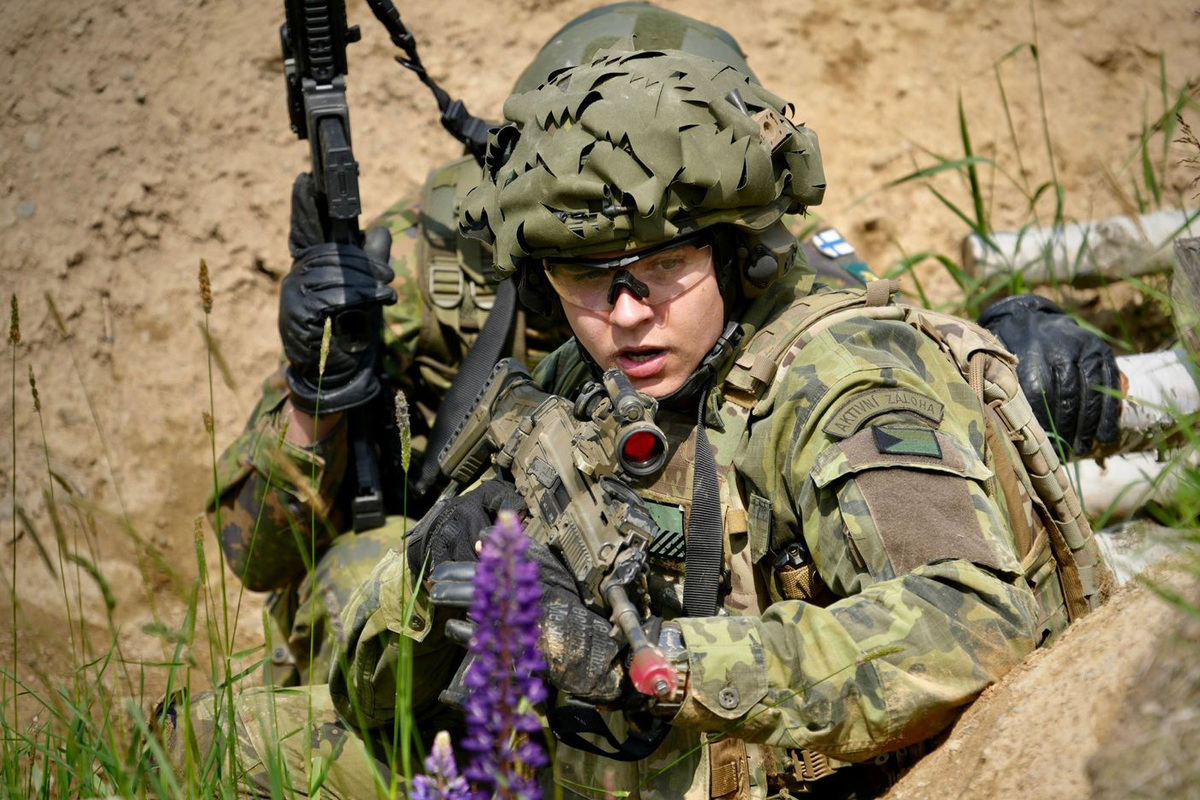
What were the main scenarios and tasks you practiced during this joint exercise?
The entire training was focused on joint rehearsing activities and their subsequent implementation under various scenarios. In addition to live fire from small arms, the activities focused on combat in built-up areas or in trench systems with simulated and live ammunition, including grenades. The main aspect was that the units worked in mixed teams and squads, so they had to coordinate their procedures and overcome language barriers, often during activities that were new to some of our and foreign personnel. This created additional challenges and required cooperation and improvisation.
Who exactly participated in Summer Blade?
Specifically, members of the mechanized company of the Active Reserve of the 72nd Mechanized Battalion, members of the Finnish Light Infantry Reserve from the Sysma Regional Defense Company, and a member of the Danish Army Mechanized Battalion Reserve participated. Due to the pilot nature of the project, the a senior warrant officer from the unit, but next year it plans to send one or two squads.
What weapons did the soldiers use during Summer Blade?
All soldiers were issued standard weapons used by our parent battalion, namely CZ P10-C pistols and CZ BREN 2 rifles. In addition to the weapons mentioned above, FN Mk 48 Minimi machine guns, CZ BREN 2 PPS sniper rifles, CZ G1 underbarrel grenade launchers, and OFFHGR 85 pressure grenades were also used during live-fire exercises.
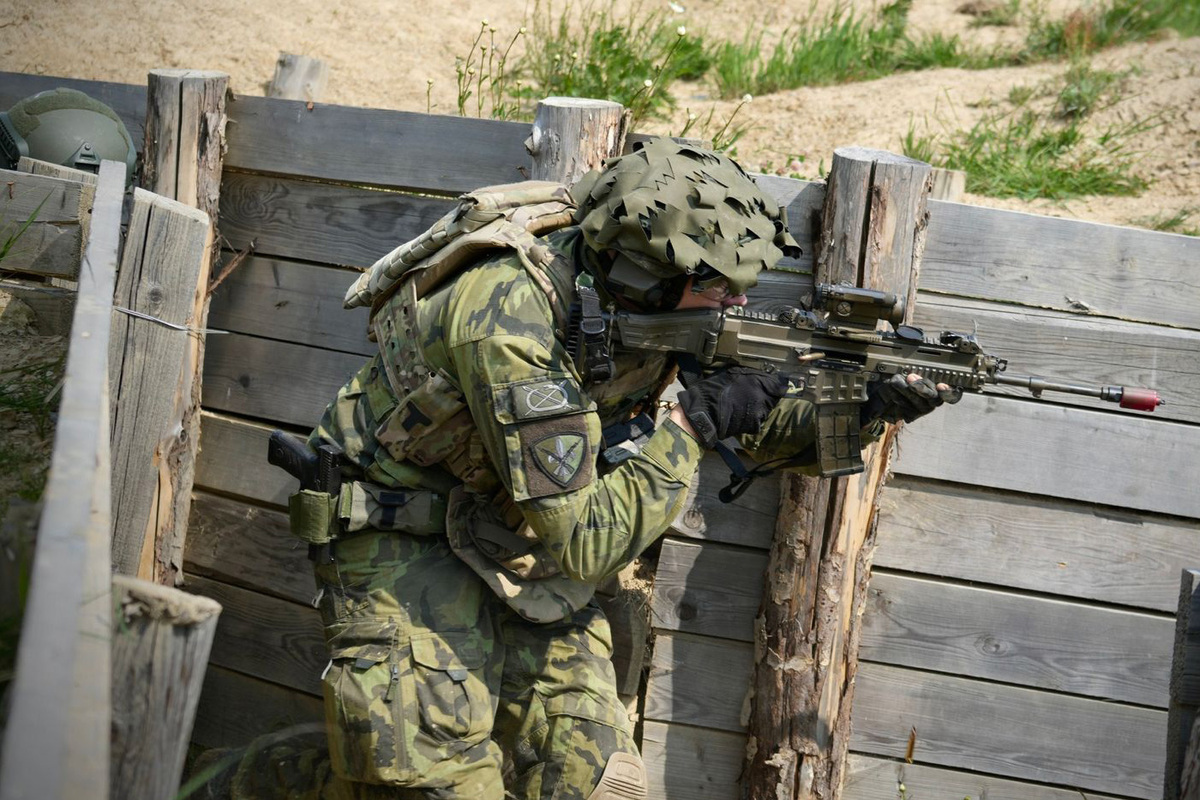
How did teamwork function in an international environment? What cultural or communication differences did you notice between participants from different countries, and how did the soldiers overcome them?
Teamwork in an international environment where English is the only common language was a challenge, but that was precisely the intention. One advantage is that Finnish, Danish, and Czech have no common roots, so we really don’t understand each other's languages. This puts pressure on everyone to communicate in English, which is the universal language within NATO. Sometimes, especially with people who are not confident in English or are beginners, this created some funny situations, but in general, everyone managed to overcome the language barrier even with more complex tasks and assignments. On the contrary, we did not notice any cultural differences in principle; we are all “bigoši” from European armies and therefore have a fairly similar view of the world and sense of humor. The atmosphere among everyone at the training, despite the language barrier and physical demands, was great, and everyone was happy to be able to participate in such training.
How were Summer Blade 2025 and MURTEC2025 connected?
At the same time, the Libavá training area hosted the international exercise MURTEC2025, led by the 533rd Unmanned Aerial Vehicle Battalion, with guests from other units of the Czech Armed Forces, Belgium, and Slovakia. Everything was focused on reconnaissance and the work of unmanned aerial vehicles. Since we also had training in the Libavá Military Training Area and had previously discussed possible cooperation with colleagues from the 533rd Battalion, we were able to combine our training with the MURTEC2025 exercise on several occasions. Summer Blade 2025 and MURTEC 2025 worked together in synergy. Unmanned aerial vehicle teams provided information and images from reconnaissance missions to ground units, or conversely, trained in search and observation. At the same time, teams of drone operators were sought out in the area by designated “enemy” units on the ground and in the air, which attacked them and disrupted their activities and tasks. This interplay between the two international exercises provided valuable experience and insights for all participants, and we hope that this cooperation can be coordinated again in 2026.
How did foreign partners view the training and cooperation?
The response was overwhelmingly positive. Foreign partners from Finland and Denmark praised our long-standing cooperation, which we have further deepened through the Summer Blade joint exercise. In particular, the focus on contemporary challenges on the battlefield for heavy and light infantry was highly appreciated, as was the mixing of units, which placed demands on training and overcoming language barriers. As far as I know, the report that our partners submitted to their superiors after the exercise was very positive, with a strong recommendation to continue and deepen this cooperation.
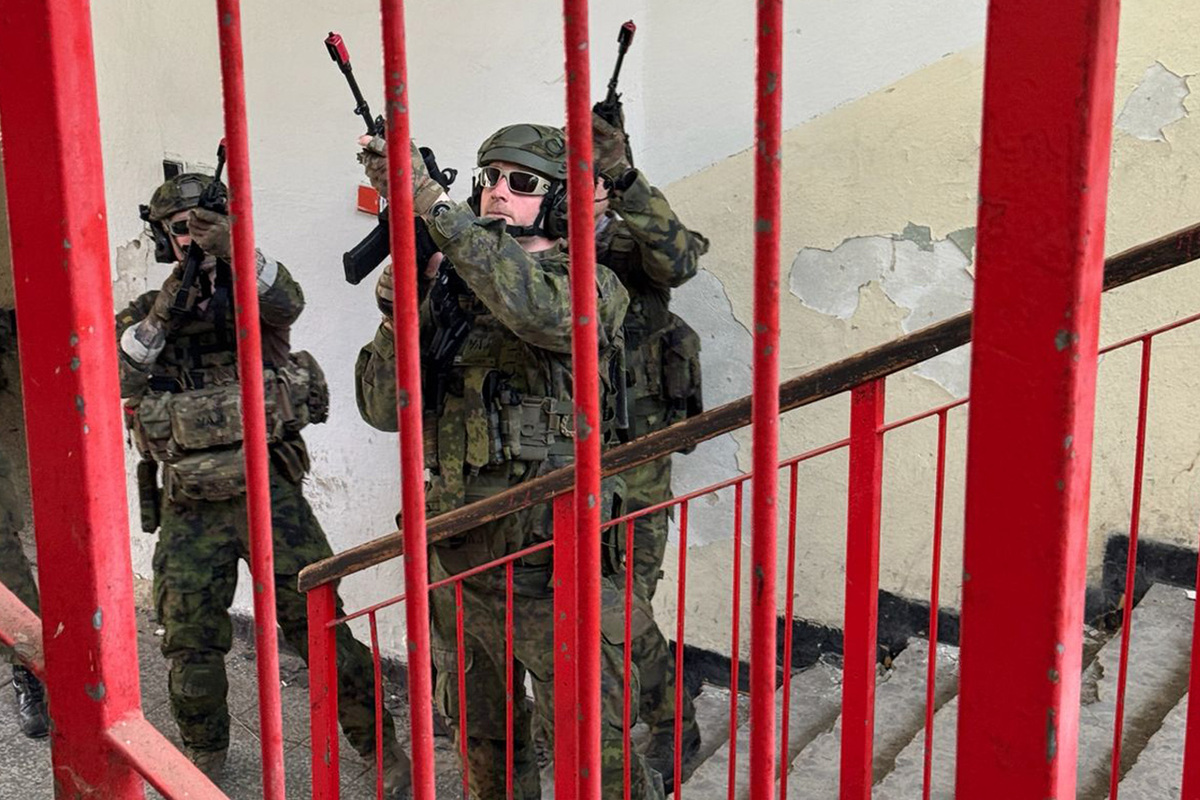
What was the biggest challenge for Czech soldiers in active reserve when working with their Nordic colleagues?
Definitely the language. Usually, it's enough for the commanders to communicate, but since cooperation with our NATO partners is essential for our joint defense, we transferred the “discomfort” of the language barrier to all members of our unit. Some coped better than others, but everyone tried hard and ultimately rated the experience very positively. For some, this is an incentive to complete their English language exams in accordance with STANAG, which is also possible and desirable for members of the Active Reserve at the University of Defense. Practicing minor differences in tactical procedures or coordination when using a new procedure was not a major problem.
What do you think our reservists took away from the exercise?
In addition to demanding work in an international environment, they definitely gained valuable experience from training in combat in built-up areas, trench systems, and, last but not least, operating in an environment where friendly and enemy drones are commonly present. For some members, it was a refresher of something they had already practiced, allowing them to reinforce their habits and procedures, while for some newer members, it was mostly completely new. In general, everything practiced during the training represents areas that modern infantry should continually focus on to strengthen their battlefield skills.
What specific skills do you think should be practiced more in future joint exercises?
Definitely, and not only due to lessons learned on the battlefield in Ukraine, it is necessary to focus on combat in built-up areas and trench or defensive systems. At the same time, it is important to include both the dangers of drones and the advantages that the use of drones offers in all activities. More and more, every soldier must think of the battlefield as a multidimensional environment where the outcome is determined by the convergence or interplay of many factors, and not just how skilled a soldier is at shooting or how physically fit they are. In modern combat, it is increasingly important for soldiers to be able to assess various aspects of the battlefield in real time and think about them comprehensively. As our deputy battalion commander, Major Lubomír Ondruš, said at one of the key meetings: “We must be able not only to survive on the modern battlefield, but also to accomplish our mission.” I fully agree with this, and that is why we must all continue to educate ourselves and work on our skills.
